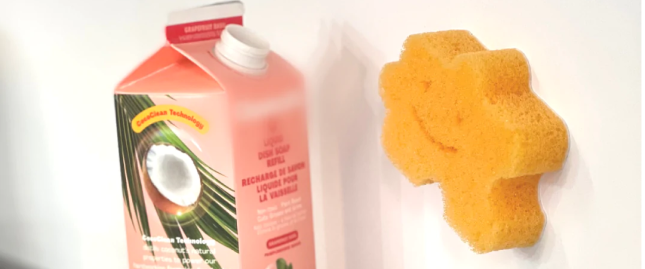AI uses digital waste for upcycled clothing design

As with seemingly everything these days, even upcycling is moving into the metaverse.
Once a very physical task dealing with very physical discarded objects to make something new (but still very physical) and thus eliminate waste, upcycling is now happening in the virtual world, too — and it’s taking sustainability to a whole new level.
Tilda, the world’s first AI designer created by South Korean technology giant, LG AI Research firm, will unveil her first capsule collection of sustainable clothing, both virtual and IRL items, on Sunday, in line with World Environment Day. Naturally, it’s launching exclusively in the metaverse.

The aim, according to LG, is to shed light not just on problems of real-life waste that ends up in real life landfills, but also the impacts of digital carbon footprints. The showcase includes 30 upcycled clothing designs on World Environment Day of 13 jackets, 14 trousers and three hats, dubbed the “Digital Upcycling Project,” was designed to highlight using digital waste to reduce carbon footprint. In its first solo fashion collection, Tilda combined digital waste, which LG claimed consumes energy and contributes to carbon emissions when transmitted or stored digitally, with secondhand denim and fabrics.

“Waste created by humans can be roughly divided into physical waste and digital waste. While physical waste directly affects the environment in reality, digital waste also affects the environment by using up storage energy which emits carbon,” Lim Jaeho, leader of the AI Human Company Division at LG AI Research, told WWD. “With the Digital Upcycling Project, Tilda is upcycling these ‘useless’ waste materials and transforming them into clothes to be reused as fashion. She is basically finding a way to reduce both physical and digital waste through her own unique, creative and eco-driven method.”

The collection showed that digital images, which would have otherwise remained dormant on a digital space, acted as sources for the upcycled designs and were reinterpreted into various items, colors and patterns largely in the Boro patchwork style, according to LG. The carbon emissions produced by a single person’s annual emails equals to the carbon produced by a large vehicle traveling 320 kilometers, the company also said.

Tilda made its first public appearance at New York Fashion Week in February at the “Flowers on Venus” joint runway show with designer Park Youn-hee of Greedilous that presented 13 images out of some 3,000 images and visual patterns created by Tilda’s artificial intelligence. The digital waste for the Digital Upcycling Project originated from the leftovers of its previous collection that were unable to make it to the runway. Tilda is powered by Exaone, a hyperscale AI engine developed by LG AI research.
Source: Son Ji-hyoung, The Korea Herald (June 2022)
More Korean Innovation News

The Rise of Womance: Women Spearhead Korean Entertainment

A Korean Marriage Story

Jwipo, Your New Jerky Obsession

To Binge or not to Binge?

The K-pop Comeback: Returning from Military Service

Longcations: Escaping to Vietnam

Kkondaes at Work: GenZ and Millennials Battle at the Office

The American Bansang Experience


